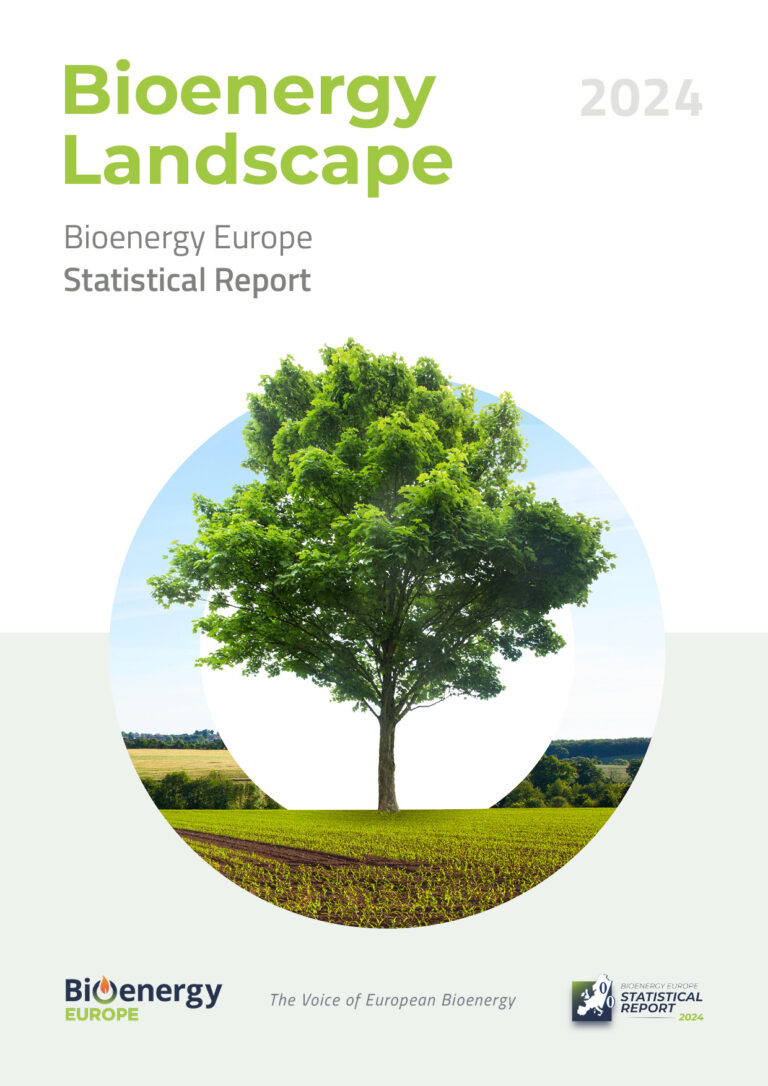
The Bioenergy Europe has published a new statistical report Bioenergy Landscape 2024, which provides a detailed analysis of the role of bioenergy in the European energy sector.
As a reminder, this review is logically divided into three parts. We are currently publishing the second part, and the third part will be available soon. The first part, ‘Bioenergy in Europe and the reduction of greenhouse gas emissions’ is already available on the SAF platform. In this article, we will look at the state of the EU’s heating & cooling and electricity sectors.
Heating & Cooling Sector
In the heat supply sector, bioheat accounts for 19%, with the main consumers being industry and residential. It is the sector with the highest final energy consumption in the EU (46.5%). Despite an 8% decrease in total energy consumption in the heat sector in 2022 due to the energy crisis, bioheat increased its relative share by 1% compared to 2021.
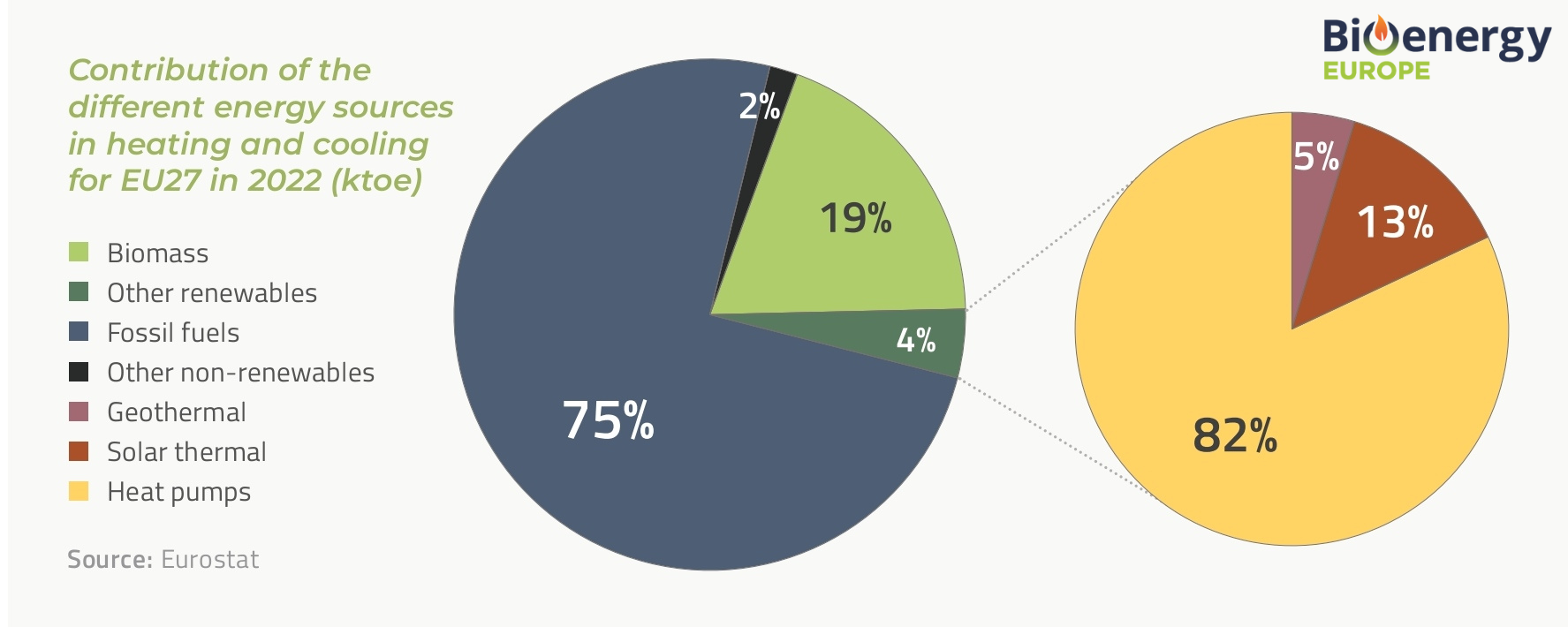
In 2022, 81% of renewable heat came from biomass, reaching 87.640 ktoe in absolute consumption. The associated greenhouse gas (GHG) savings were estimated at approximately 166 MtCO2eq, equivalent to nearly the total annual emissions of the Netherlands. These substantial shares underscore the pivotal role of sustainable bioenergy, particularly solid biomass, in advancing renewable energy targets within the heating sector.
Solid biomass remains the dominant feedstock for bioheat in Europe, accounting for 91% of total bioheat consumption. More than 50% of solid biomass is utilized in the residential sector, primarily in small-scale appliances, making it the key driver of heat consumption in Europe and a cornerstone of the sector’s renewable energy transition.
In 2023, EurObserv’er reports a Levelized Cost of Energy of approximately 53 €/MWh for bioheat, the most cost effective amongst renewable solutions
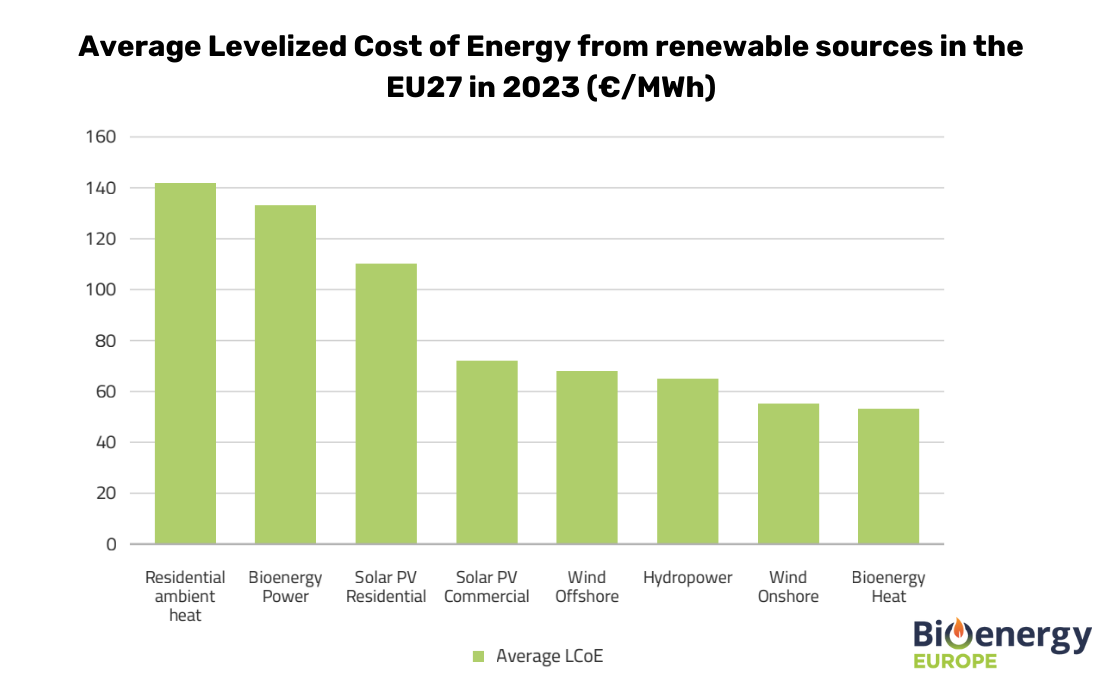
Source: Bioenergy Europe.
The decarbonisation of the heating and cooling sector will play a pivotal role in the EU’s climate neutrality goal by 2050. Despite the advancements in renewable energy systems, outdated and inefficient heating appliances are prevalent in most EU Member States. They contribute to greenhouse gas emissions and poor air quality. It is both necessary and urgent to replace these systems with modern and renewable alternatives, such as modern biomass boilers and stoves
Electricity from biomass
In general, there is an increasing trend in the production of electricity from RES. Since 2000 (37,000 ktoe), electricity production from RES has more than doubled, reaching almost 93,000 ktoe by 2022. In 2022, the EU maintained support for bioenergy, recognizing its potential for providing reliable, dispatchable power that complements intermittent renewable sources like wind and solar.
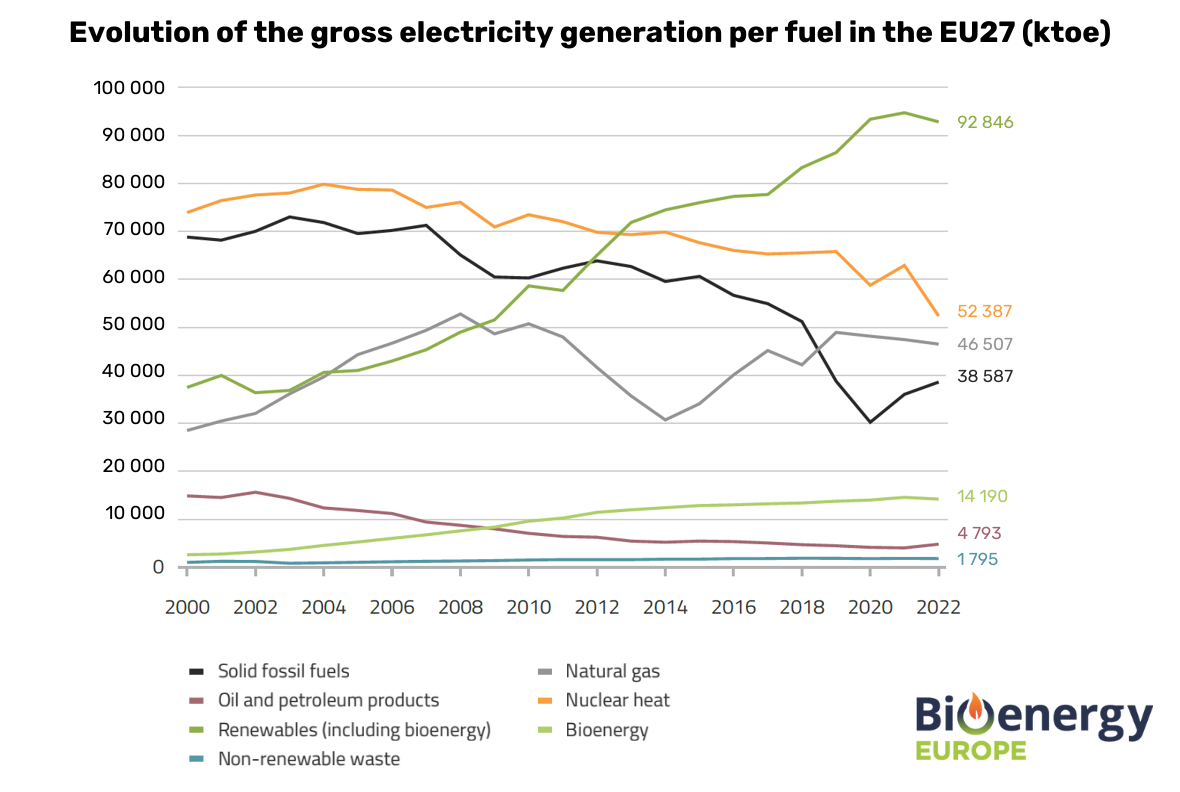
Source: Bioenergy Europe.
Renewable energy sources make up a substantial portion of the generation mix, with wind energy at 15,09%, hydro at 9,90%, solar PV at 7,37%, and bioenergy at 6,02%. Together, renewables comprise over a third of the total, underscoring the EU’s progress toward increasing renewable capacity to meet its climate goals.
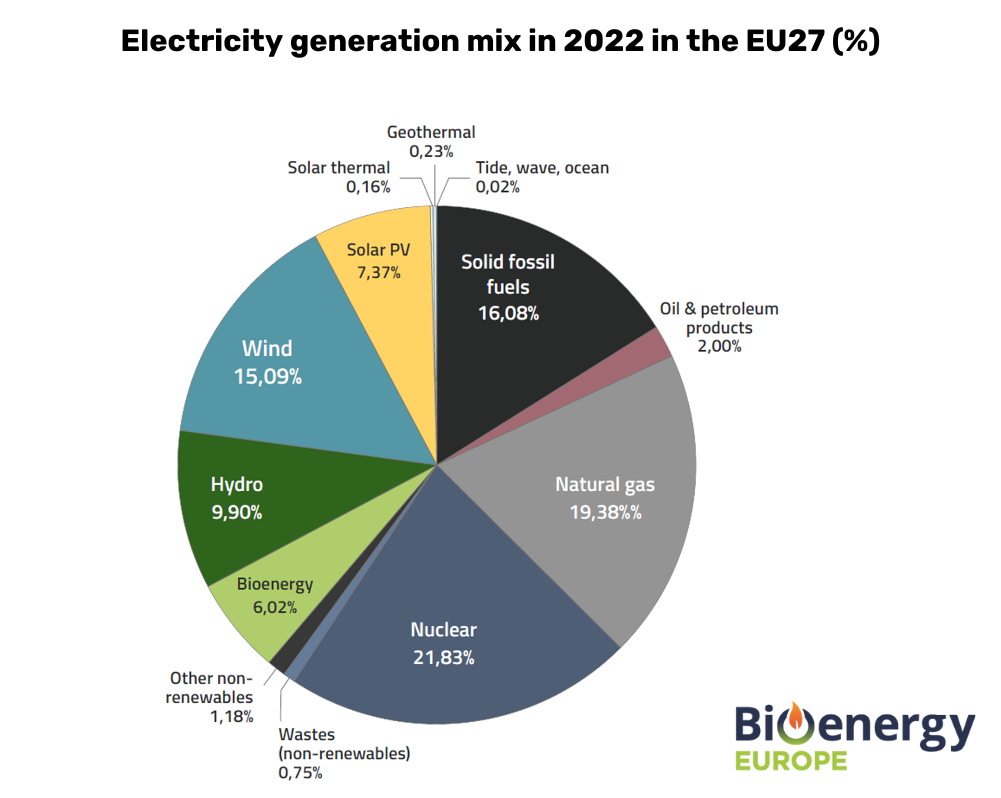
Source: Bioenergy Europe.
Bioelectricity (which includes electricity generation several bio-based sources like solid biomass, biogas, liquid biofuels and municipal waste) grew at 2% from 2021 to 2022, reaching 36.884 MW of installed capacity. Though bioelectricity is not expanding as quickly as other renewable sectors like solar and wind, it still plays a crucial role in the energy transition. This is mostly due to the fact that electricity generation from bioenergy is already in quite a mature state and therefore expands at a slower pace. Nonetheless, its ability to provide consistent baseload power, unlike the more intermittent nature of wind and solar, makes it an essential component of the renewable mix. Unlike other renewables, bioenergy also offers advantages in CHP (combined heat and power) applications, increasing overall energy efficiency. Investments in modernising grids and bioenergy plants are important to increase their efficiency and capacity.
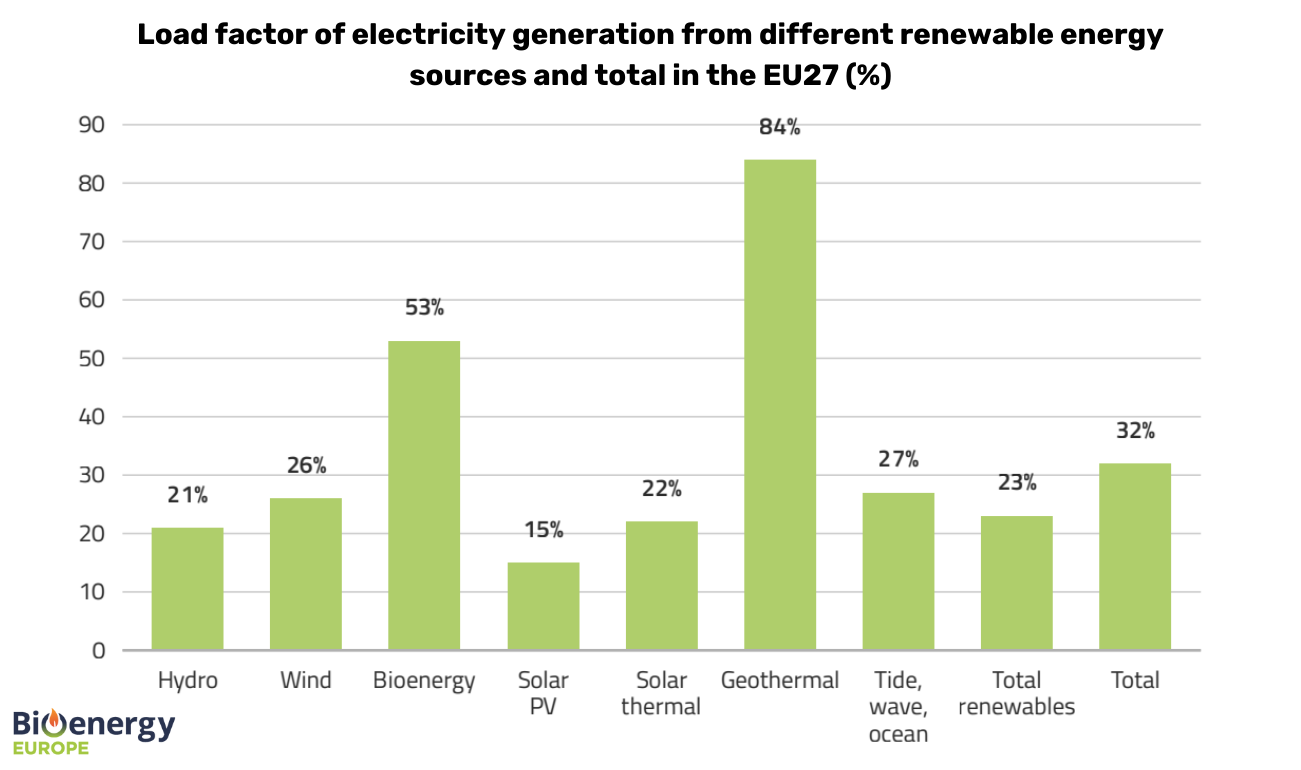
Source: Bioenergy Europe.
Note
The report primarily uses Eurostat 2022 data available at the time of publication. They are supported by input data from the European Biogas Association (EBA) and FAO databases. Using different sources can sometimes lead to small differences in the data presented, mostly due to methodological differences. This is the case for example when comparing biogas data, where Eurostat doesn’t include biomethane under their Biogases classification and therefore provides slightly smaller numbers when compared to the data coming from the European Biogas Association, depicting a more accurate picture of what is actually being consumed. Therefore, some amendments have been made to calculate the new figures and to provide a more detailed understanding of the EU’s energy dynamics.
This review for SAF Ukraine was prepared by Semen Drahniev, an expert at the Bioenergy Association of Ukraine.